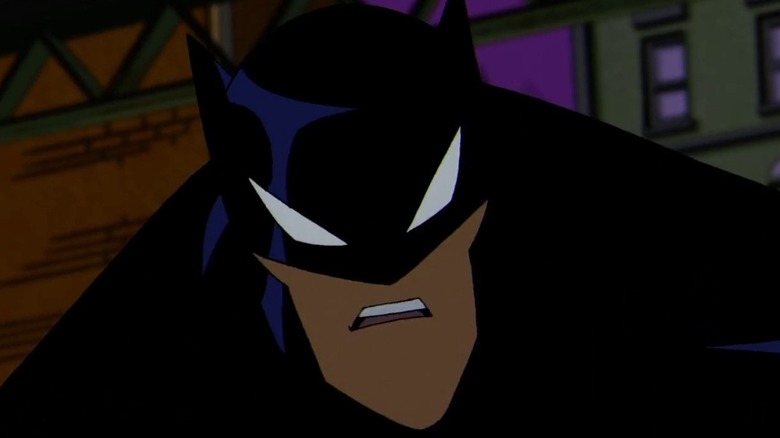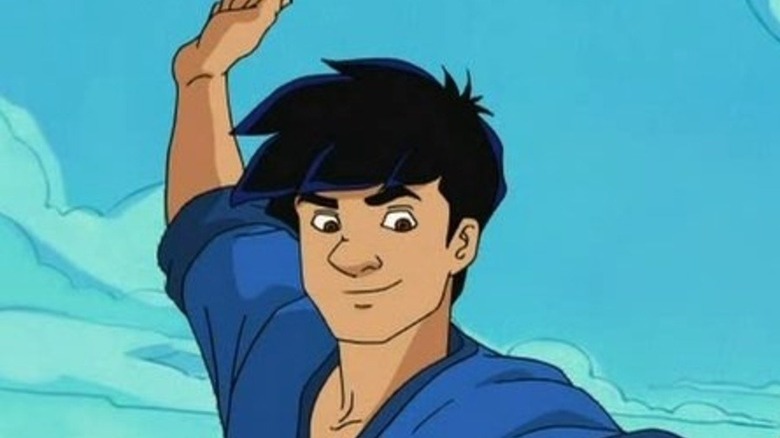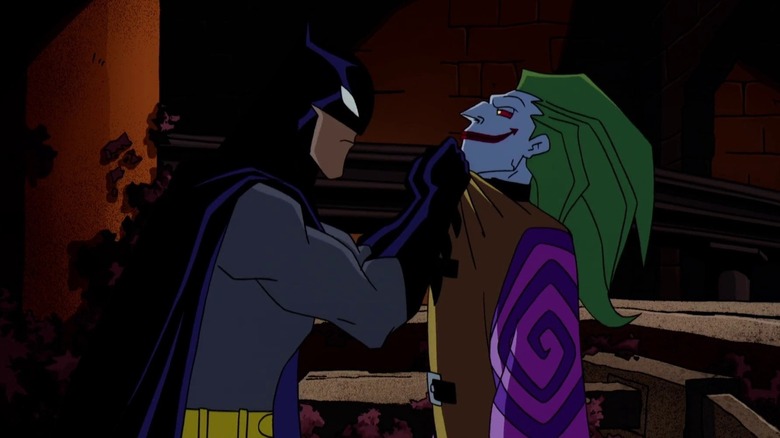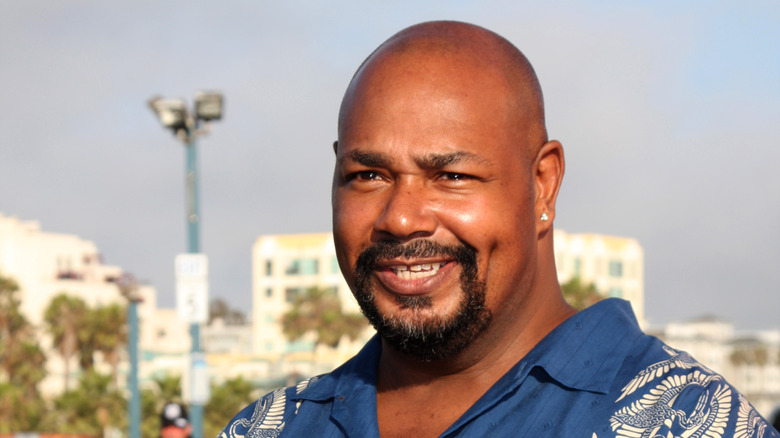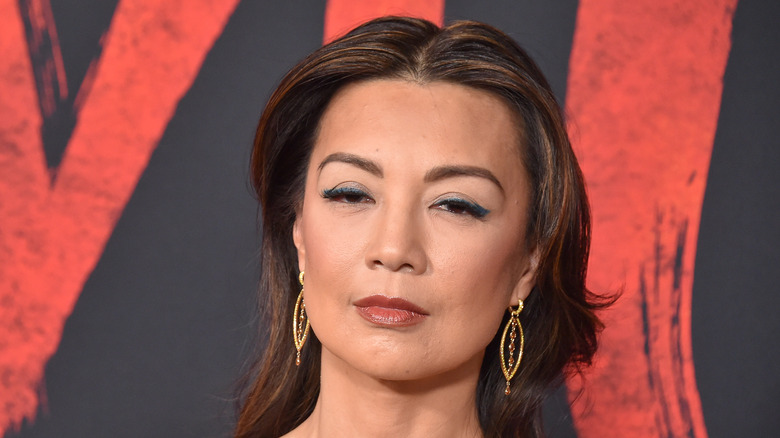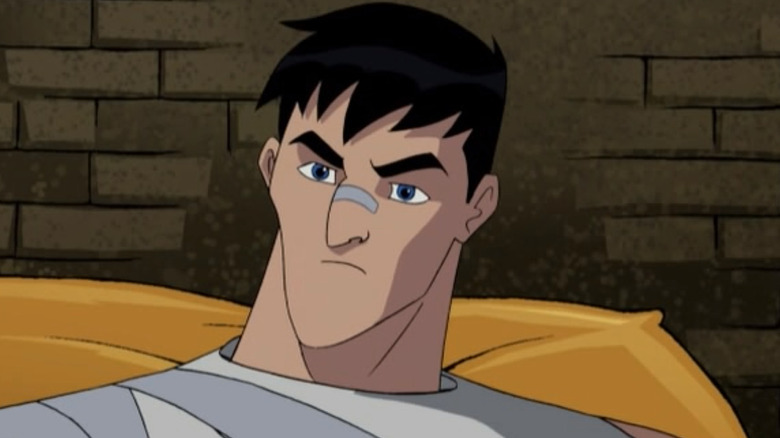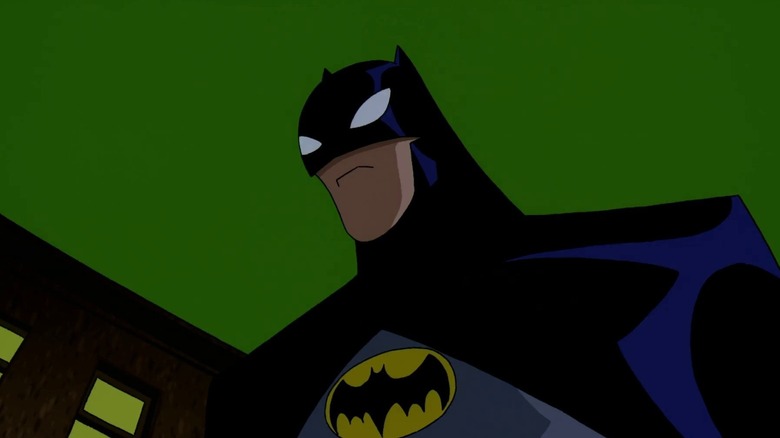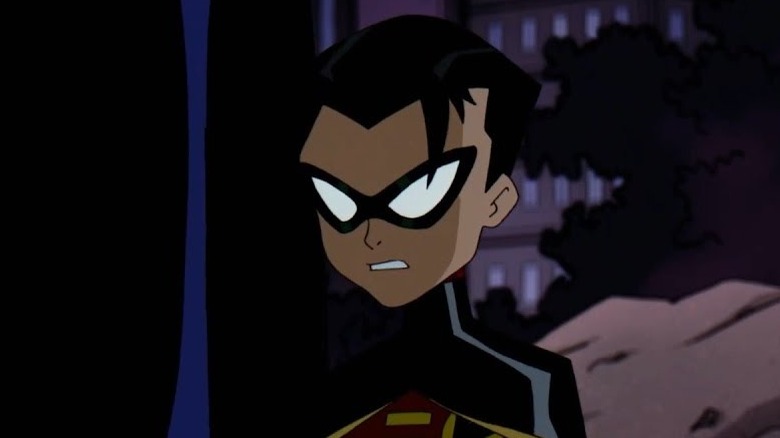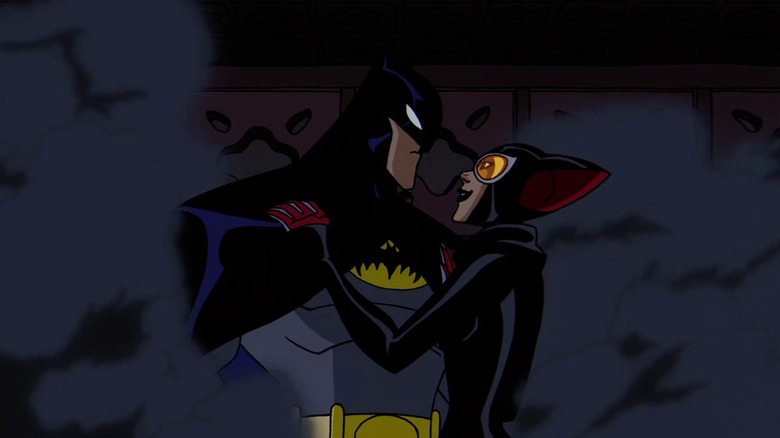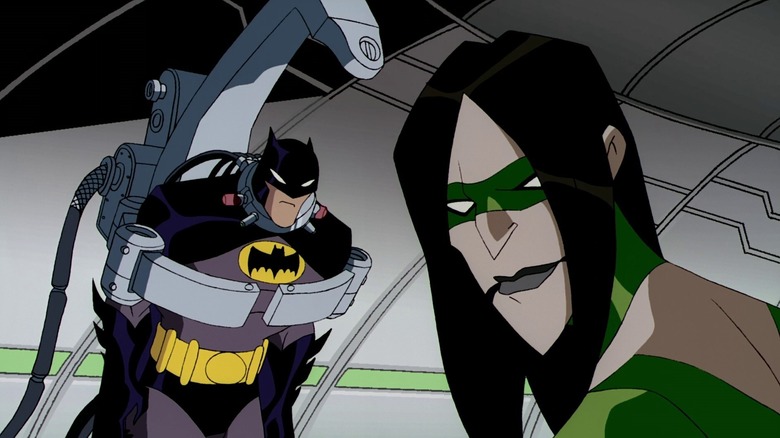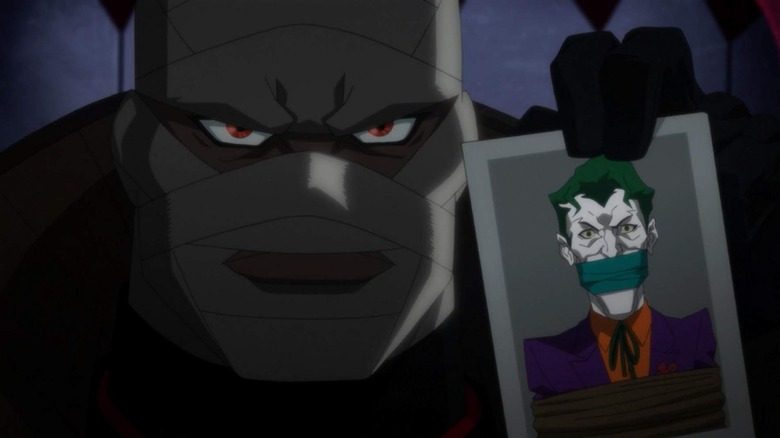The Untold Truth Of The Batman Animated Series (2004)
Remember "The Batman"? No, this isn't about the Matt Reeves film, starring Robert Pattinson as the titular hero. We're talking about the animated series from 2004 that ran for five seasons and won six Daytime Emmy Awards. Despite its long and highly acclaimed run, it's still stuck in the shadow of "Batman: The Animated Series," with many fans giving it a skip simply because it was something else and had a different voice cast.
The comparison is unfair, though, as "The Batman" was a great series in its own right. Not only did it reimagine the rogues' gallery, but it also explored areas of the mythology that had yet to be defined. How this show came to be is an equally interesting story, as the showrunners had to work around forced embargos, the lack of a key character's availability, and even the launch of the tie-in comic book series. Holy guacamole, Batman! Without further ado, let's dive right into the untold truth of "The Batman."
How Jackie Chan helped The Batman
When you mention the name Jeff Matsuda to comic book fans, the first thing that comes to mind is innovative character design. Matsuda took that same skill into the animated TV world, delivering a fresh and intriguing take on "Jackie Chan Adventures." The show was a monumental hit, leading to a toy franchise and video games. However, all good things must come to an end, and another one of Matsuda's abilities appears to be his ability to sniff out when it's time to move on.
Speaking to The World's Finest, "The Batman" artist and character designer José López explained how Matsuda helped both of them secure gigs for the Dark Knight series while they were still working on "Jackie Chan Adventures." "We were wrapping the season, and the rumors around the studio were that we did not have a pick up for another season, and we were going to get the boot," López said. "So, the first thing you do is to start looking for the next gig." Matsuda told his colleague that he was already "negotiating" with another show, and if it all panned out as expected, he wanted López to join him. And it happened exactly like that — Matsuda brought López along with him to "The Batman."
The consequences of the Bat-embargo
In 2004, the comic book movie and TV landscape was much different than what it is now. Productions were far and few in between, and there was a lot of hesitancy around whether they'd be successful or not. More importantly, there was a Bat-embargo surrounding the Dark Knight and other characters from the lore. This embargo was a rule that multiple versions of characters couldn't exist without specific permission (characters such as Batman and the Joker were obvious exceptions since a Batman-themed show wouldn't be able to exist without them). While undoubtedly a bizarre premise, it was created with the belief that DC Comics didn't want to oversaturate its characters or cause confusion among the audience.
Around the time when Christopher Nolan was preparing "The Dark Knight Trilogy," the Bat-embargo became stricter to protect the integrity of the movie characters. This is the reason that Two-Face, Ra's al Ghul, and the Scarecrow didn't appear in "The Batman" — they were exclusively reserved for Nolan's films. Thankfully, everyone at Warner Bros. and DC finally saw how silly this whole embargo nonsense was and stopped enforcing it.
Kevin Michael Richardson's anger
Having the opportunity to voice the Joker would delight any actor. After all, the Clown Prince of Crime is one of the most iconic villains in the history of entertainment, so who wouldn't want a chance to put their spin on Arkham Asylum's prime patient? For Kevin Michael Richardson, his role as the Joker is still one of his favorite voice acting gigs (per Geek Mom). However, he was initially "upset" when approached for the part — though not for the reasons we might think.
"I was rather upset when they came to me and said they were going in a new direction, with completely different producers, a different version of the Batman, different version of the Joker," Richardson said. "I was like, 'Well, why? Why would you want me? Why not have Mark [Hamill] do it?'" As a "die-hard fan" of "Batman: The Animated Series," Richardson didn't want to see the Joker recast (even if it was at the expense of a job for him). He explained how he put all his "anger" and "frustration" into his audition, then got a call saying he landed the part a few days later. Sounds like it was anything but a bad day for Richardson, right?
Ming-Na Wen didn't know about the big twist in The Batman
Ming-Na Wen is no stranger to the superhero genre, having starred in "Agents of S.H.I.E.L.D." and the "Spawn" animated series. She also played her part in "The Batman," voicing Detective Ellen Yin for the first two seasons of the show. Detective Yin and her partner, Ethan Bennett, were integral as the two members of the Gotham City Police Department who had the most interaction with Bruce Wayne/Batman before Jim Gordon came on the block.
Yet, there was a big twist at the end of Season 1 when Bennett transformed into Clayface. It was a shocking moment for the fans, but equally unexpected for Wen, as she revealed to Groucho Reviews. "And so that was a huge surprise to me," she said. "I had no idea about that. Yeah, they, y'know — like with any series or anything, I think wherever the writers take their creativity: y'know, it's — just let them do it." The twist of fate on "The Batman" must've served as good preparation for "Agents of S.H.I.E.L.D." since not one single person could be trusted on that show, either.
Less villains, more Bruce Wayne
In animated series, a typical format is to have a villain of the week. The episode will touch upon their origin story and have the hero successfully defeat them in the end. It's a tried-and-tested formula, ensuring that the audience tunes in to see which rogue will feature in the next episode. While "The Batman" still kept the villain-of-the-week angle present, it decided to avoid their origins for a specific and good reason.
As producer Duane Capizzi explained to The World's Finest, the show needed to do something to stand out from "Batman: The Animated Series" in an interesting way. "From a storytelling standpoint, we wanted to tell the stories less from the villains' point of view and more from Bruce Wayne's," he said. "Because we wanted our sympathies to be with Bruce, to experience his various dilemmas as he grows to become a better Batman, we made the decision to avoid pathos with the bad guys." Capizzi added that there were "notable exceptions" to the rule, but the plan was always to focus more on Bruce than the villains.
Why Batman eats nachos
While "The Batman" reimagined old pointy ears for a new generation, it also introduced some new tidbits that we'd never considered — such as one of Bruce Wayne's favorite foods. Though this revelation left more than a few fans puzzled as the answer wasn't lobster or oysters off the coast of the Bahamas. Instead, it was the cheesy, delicious delight known as nachos.
Discussing the decisions made for the show to The World's Finest, Duane Capizzi made the following point: "It just seemed natural that if Alfred is going to serve Bruce a snack in the [Batcave], it's going to be nachos or peanut butter sandwiches or the like — not foie gras!" Additionally, Capizzi brought up how the bachelor personality is all but an act for the outside world, so while Bruce might eat something expensive in public, he's probably much more simple behind closed doors. Think about it for a second: It's easier to take a sandwich or plate of nachos on the go in between sessions of beating up Gotham City's most dangerous criminals.
Robin's initial unavailability
When "The Batman" Season 3 aired, many fans were surprised to see that Barbara Gordon's Batgirl was introduced as the Caped Crusader's first partner. After all, in the comics, films, and other TV shows, Robin was always the chosen one, but he only showed up in Season 4. So, why was this changed all of a sudden?
"Maybe people were expecting Robin to be introduced first," executive producer Alan Burnett told The World's Finest in the lead-up to Season 4, "but Robin wasn't available to us until this season." The reason for Robin's unavailability was simply because of the "Teen Titans" show that was immensely popular at the time, and the network didn't want to have two versions of the character jumping off rooftops. Once the series concluded in 2006, Robin was free to enter "The Batman." With the multiverse in full effect nowadays, it appears that such problems are things of the past.
The challenge for the comic book series
As with most superhero animated shows of the time, there was a tie-in comic book titled "The Batman Strikes." The book ran for 50 issues and served as a spinoff to the adventures from the animated series. But it wasn't an easy task for the creative team working on the title, especially in the beginning stages.
Artist Christopher Jones had worked on "Justice League Adventures," which was a tie-in of the "Justice League" animated series, so he had experience with adapting a TV show to the comic book medium. However, there was a unique challenge with developing "The Batman Strikes" concurrently with "The Batman," as he explained in an interview with The World's Finest. "The biggest challenge with 'The Batman Strikes' revolved around the fact that it was a brand new show," he said. "I hadn't seen these characters move or heard their voices. They were just static designs on a model sheet." Jones believes the art eventually became a merger of his style and Jeff Matsuda's. Considering how great it turned out in the end, let's chalk it up as a win for everyone here.
A different Riddler
One of the biggest talking points about "The Batman" was the drastic redesign of the villains. While it was entirely intentional and exaggerated in places, there was one extreme makeover that surprised everyone: The Riddler. It was a grungier and different aesthetic for the enigmatic character, and the look was obviously inspired by a real-life person.
Taking one glance at this Riddler, it's easy to see that Marilyn Manson served as the main inspiration for his character design. From the long, jet-black hair to the slender physique and even the application of the black lipstick, there's no doubt the controversial rocker was the archetype for Edward Nigma. Rumor has it that at one point, talks actually took place between Manson and the producers for him to voice the character. However, when the team found out that Robert Englund was available and interested, he was the clear choice.
Keep it hush-hush
What is Batman without his infamous rogues' gallery? Well, "The Batman" didn't hold back and featured the who's who of villains — including some lesser-known antagonists like Killer Moth and Spellbinder. However, there was one glaring omission from the series: Thomas Elliot, aka Hush. Created by Jeph Loeb and Jim Lee, the bandaged character debuted in the pages of "Batman" #609 in 2003 and made an instant splash due to his personal connection to Bruce Wayne. With Hush so fresh in the minds of comic book fans around the world, he would've made an excellent addition to "The Batman."
Sharing exclusive artwork with Legion of Gotham, Jeff Matsuda revealed that he actually had plans for a direct-to-video film featuring Hush. But sadly, this never came to fruition. Judging by the artwork, however, it appears as if the movie would've been an adaptation of the 12-issue "Batman: Hush" storyline where the Dark Knight faces off against a litany of villains, such as the Joker, Penguin, Catwoman, and, of course, Hush. The question is, would it also have introduced Jason Todd into "The Batman" universe, especially considering how important the second Boy Wonder was to the original "Hush" storyline?
